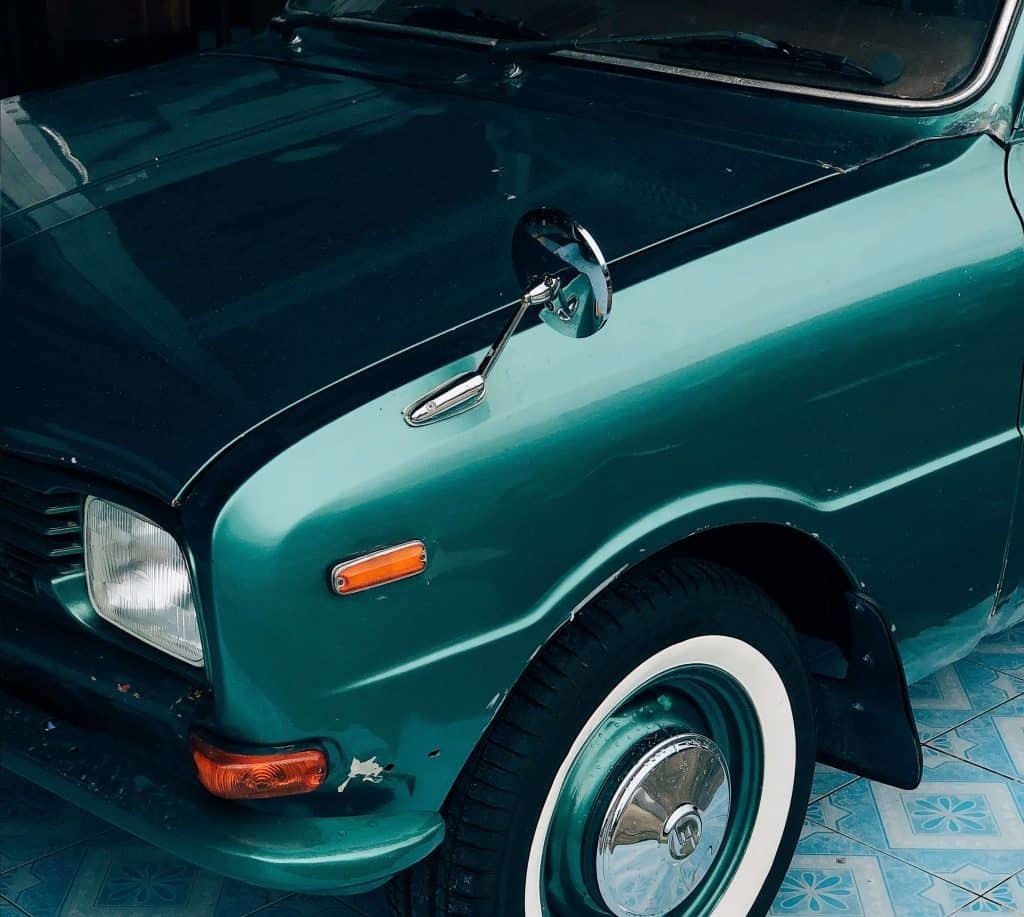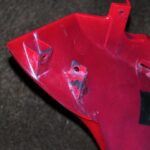Your car is more than just a vehicle; it’s a significant investment and a statement of your personal style. Discovering scratches on its otherwise pristine surface can be a real setback for any car owner. However, those unsightly scratches don’t have to be a permanent problem. With the proper methods and tools, you can effectively tackle car scratches and bring back your car’s flawless finish.
This guide will walk you through understanding different types of car scratches and provide step-by-step instructions on how to repair scratched surfaces of your car, ensuring it looks its best once again.
Understanding the Types of Car Scratches
Before you start the repair process, it’s crucial to identify the type of scratch your car has sustained. Car paint typically consists of three main layers: the clear coat, the base coat (color layer), and the primer. Scratches are categorized based on which layer they penetrate.
1. Clear Coat Scratches: Surface Level Damage
Clear coat scratches are the most superficial type, affecting only the outermost clear coat layer. These are often caused by minor abrasions like brushes in car washes, light brushes against vegetation, or accidental grazes. They are generally shallow and, fortunately, the easiest to repair.
2. Base Coat Scratches: Deeper than Surface
Base coat scratches go beyond the clear coat and into the colored base coat layer. These are caused by more significant impacts, such as scraping against objects or deeper encounters with road debris. Repairing these requires a bit more effort than clear coat scratches but is still manageable at home.
3. Primer Coat Scratches: Deepest Level of Damage
Primer coat scratches, also known as deep scratches, are the most severe. They penetrate through the clear coat, the base coat, and reach down to the primer layer. These are typically the result of harsher incidents like collisions or severe scrapes. Repairing primer scratches is more complex and might require professional intervention for a perfect finish.
Alt text: Close-up of a car panel showing a deep scratch, illustrating paint damage.
How to Determine the Type of Scratch on Your Car
Accurately identifying the scratch type is essential for choosing the correct repair method. Here are two simple methods to help you:
The Fingernail Test: Gently run your fingernail across the scratch.
- Clear Coat Scratch: If your fingernail does not catch in the scratch, it’s likely a clear coat scratch.
- Deeper Scratch (Base Coat or Primer): If your fingernail catches, it indicates a deeper scratch that has penetrated beyond the clear coat.
The Polish Test: Use car polish and a microfiber cloth.
- Clear Coat Scratch: Apply a small amount of polish to a microfiber cloth and rub it onto the scratch. If the scratch disappears, it confirms it’s a clear coat scratch.
- Deeper Scratch (Base Coat or Primer): If the scratch remains visible after polishing, it’s likely a base coat or primer scratch.
Step-by-Step Guide to Removing Car Scratches
Once you’ve identified the type of scratch, you can proceed with the appropriate repair steps.
Repairing Clear Coat Scratches: A Simple DIY Fix
Clear coat scratches are usually the easiest to fix at home. Here’s how:
Step 1: Thoroughly Clean the Scratched Area
Begin by cleaning the area around the scratch with car wash soap and water. This removes any dirt and debris that could further scratch the paint during the repair process. Ensure the area is completely dry before moving on to the next step.
Step 2: Apply Scratch Remover Compound
Apply a small amount of scratch remover compound to a clean microfiber cloth. Gently rub the compound into the scratch using a circular motion. Use light to moderate pressure and continue buffing until the scratch visibly diminishes or disappears. The mild abrasives in scratch removers work to level out the clear coat, removing the shallow scratch.
Step 3: Polish to Restore Shine
After removing the scratch, apply a car polish to a fresh microfiber cloth. Buff the polished area to restore the original shine and smoothness of the clear coat. Polishing refines the surface and enhances the gloss.
Repairing Base Coat Scratches: Touch-Up and Blending
Repairing base coat scratches requires a more involved approach, including touch-up paint.
Step 1: Clean the Area Meticulously
As with clear coat scratches, start by thoroughly cleaning the scratched area with car wash soap and water. Dry the area completely to prepare it for repair.
Step 2: Apply Touch-Up Paint Carefully
Using a fine-tipped applicator like a toothpick or a small brush, carefully apply a small amount of touch-up paint to the scratch. Apply thin, even coats, just enough to fill the scratch to be level with the surrounding paint. Allow each coat to dry completely as per the paint manufacturer’s instructions. Multiple thin coats are better than one thick coat to prevent drips and ensure proper drying.
Step 3: Level with Sandpaper (Carefully)
Once the touch-up paint is completely dry, lightly sand the area using ultra-fine 2000-grit sandpaper. Wet sand by keeping the sandpaper and the area lubricated with water. This step is crucial to level the touch-up paint with the original paint surface. Be extremely gentle to avoid scratching the surrounding good paint.
Step 4: Use Rubbing Compound for Blending
Apply a small amount of rubbing compound to a microfiber cloth. Rub the compound over the sanded area using a circular motion with light pressure. This will help blend the touch-up paint with the surrounding paint and remove any fine sanding marks.
Step 5: Polish for a Seamless Finish
Finally, apply car polish to a clean microfiber cloth and buff the area to restore the shine and achieve a seamless finish. Polishing will enhance the gloss and make the repair less noticeable.
Repairing Primer Coat Scratches: When to Consider Professional Help
Primer coat scratches are the most challenging to repair and often require professional expertise for the best results. However, if you’re determined to attempt a DIY repair, here are the steps:
Step 1: Thoroughly Clean the Damaged Area
Clean the area around the primer scratch with car wash soap and water and dry it thoroughly.
Step 2: Initial Sanding to Remove Rough Edges
Start by sanding the area with coarser 1000-grit sandpaper to remove any rough edges and prepare the surface. Follow up with 2000-grit sandpaper to smooth out the sanding marks from the 1000-grit paper. Wet sanding is recommended.
Step 3: Apply Touch-Up Paint in Layers
Apply touch-up paint to the scratch using a fine brush, similar to base coat scratch repair. Build up thin, even layers, allowing each layer to dry completely. This may require several applications to fill the depth of the primer scratch.
Step 4: Level Sanding for Smoothness
After the touch-up paint is fully cured, use 2000-grit sandpaper to carefully wet sand the area again, leveling the touch-up paint with the surrounding surface.
Step 5: Rubbing Compound for Blending and Scratch Removal
Apply rubbing compound to a microfiber cloth and buff the sanded area in a circular motion. This step is vital for blending the repaired area and removing sanding marks.
Step 6: Final Polish for Shine and Protection
Conclude with car polish on a clean microfiber cloth to restore the shine and protect the repaired area.
Important Note: Deep primer scratches are often best handled by professionals. If you are uncomfortable with these steps or if the scratch is extensive, it’s advisable to seek professional auto detailing or body shop services. Attempting to repair deep scratches yourself can sometimes lead to unsatisfactory results or further damage if not done correctly.
Essential Tips to Prevent Car Scratches
Prevention is always better than cure. Here are several effective ways to minimize the risk of scratches and maintain your car’s paintwork in top condition:
-
Regular Waxing: Apply a quality car wax regularly. Wax adds a protective layer over the clear coat, making it more resistant to minor scratches and environmental damage.
-
Covered Parking: Whenever possible, park your car in a garage or under a carport. Covered parking protects your car from harsh weather conditions, UV rays, and potential scratches from tree branches or falling debris.
-
Choose Parking Spots Wisely: Avoid parking too close to trees, bushes, or shopping carts that could potentially scratch your car. Opt for open spaces away from potential hazards.
-
Regular Car Washing: Wash your car frequently to remove dirt, grime, and road debris that can act as abrasives and cause scratches over time. Use a quality car wash soap and a soft wash mitt or microfiber cloth.
-
Microfiber Cloths for Washing and Drying: Always use microfiber cloths for washing and drying your car. Microfiber is gentle on paint and less likely to cause swirl marks or scratches compared to other materials.
-
Avoid Automatic Brush Car Washes: While convenient, automatic car washes with brushes can be abrasive and cause scratches, especially swirl marks, over time. Opt for touchless car washes or hand washing whenever possible.
-
Use a Car Cover: If you frequently park your car outdoors, especially for extended periods, use a car cover. A car cover provides a physical barrier against scratches from dust, wind-blown particles, and accidental contact.
Final Thoughts on Car Scratch Repair
Repairing scratches on your car at home is achievable with the right knowledge, tools, and patience. By understanding the type of scratch and following the appropriate repair steps, you can restore your car’s appearance and protect its value.
While DIY scratch repair is effective for minor damage, remember that professional auto detailing services are always an option for more significant scratches or if you prefer to ensure a flawless finish without the effort. Whether you choose to tackle it yourself or seek professional help, keeping your car scratch-free is a key part of maintaining its beauty and longevity.



